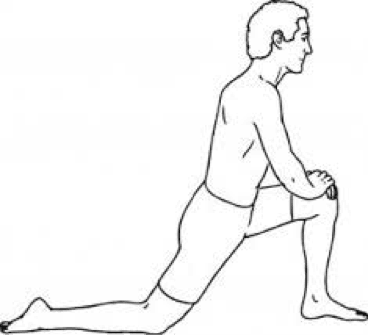What are they? Where are they? And how can I stretch them?
When you are lying on the table with your knees bent and your osteopath is poking you in the stomach a few centimetres either side of your belly button, chances are they are assessing or treating your psoas muscle. Pronounced So-As, this would have to be one of the least known muscles by the general public.
It’s time to pull back the veil and get wise to the ways of the Psoas. This muscle is big and important. When it gets tight it can lead to low back pain, clicking hips, achy thighs, poor posture and shallow breathing patterns amongst others.
The psoas muscle joins the upper and the lower body, the legs to the spine, runs from deep inside the abdomen to near the surface of the skin, and runs from back to front! Does it sound important yet?
When it contracts it contributes to hip flexion, trunk side bending and pulling the trunk up from a lying down position (like in a sit-up!).
Attaching to both sides of the spine, the psoas spans from the last thoracic vertebrae (T12) to each of the 5 lumbar vertebrae. From there it flows down through the abdominal cavity, the pelvis, to attach to the top of the femur (thigh) bone. It relates anatomically to the diaphragm, kidney, front of the hip, the flank muscle (quadratus lumborum), aorta, kidneys, ureters, lymph nodes, pancreas and portions of the gastrointestinal tract (duodenum, ascending and descending colon, and appendix).
In general the psoas are also lumbar spine stabiliser muscles. If you have low back pain, either or both of the muscles will contract to prevent your body being able to move in the direction which causes pain.
A relaxed psoas allows the front of the thighs to lengthen and the leg to move independently from the pelvis, enhancing and deepening the lift of the entire torso.
And now the tricky bit…. How to “relax” your psoas!

To stretch your psoas I recommend a lunge type stretch. Lunge as far as you can and have the front knee directly over the front heel (as above). Once you have this position and are stable you have a good stretch on the lower part of psoas, but I’m not convinced this stretches the upper psoas.
From the position above, I recommend having a chair in front for support and slightly elongating your torso (this is different to arching your back as is typically seen in a psoas stretch). This enables access to the upper psoas and a complete stretch.
Breathe fully in and fully out and keep elongating, while stable for 30-45 seconds. Always do both sides.
Sounds simple right. Give it a try and if you are struggling please ask for help.




